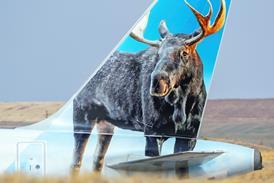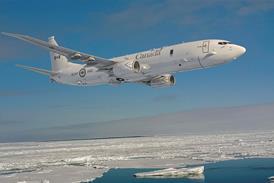A brewing industry battle to upgrade thousands of older-model Lockheed Martin F-16s is broadening beyond radars to the cockpit displays that could soon be overwhelmed by vast amounts of new sensor data.
The bidding war over the F-16 radar market started last year when Raytheon unveiled plans to challenge Northrop Grumman's monopoly of the international F-16 radar market. Northrop quickly responded to the Raytheon Active Combat Radar (RACR) by offering the Scaleable Agile Beam Radar (SABR). Both products would replace the F-16's APG-68 mechanically-scanned array with active electronically scanned array (AESA) systems.
Now, both competitors are expanding their radar upgrade offerings by seeking out centre pedestal display technology.
David Wallace, Northrop Grumman's SABR programme manager, confirms his company is in discussions with various companies on new cockpit displays.
 |
|---|
© Northrop Grumman |
Meanwhile, Raytheon unveiled an internally developed centre pedestal display at the Air & Space Convention on 15 September to complement its RACR upgrade offering. Raytheon's proposed 150 x 300mm (6" x 12") colour display is dramatically larger than the box-like display found in most F-16 Block 20s, 30s and 40s.
Upgrading F-16 radars without addressing the size and functionality of the older displays would result in only an "adequate" overall improvement in capability, Wallace says. Northrop plans to have an integrated antenna and radar processor in bench testing by the end of September, followed by flight trials aboard a modified Sabreliner by November or December.
Northrop is also prepared to enter a system development and demonstration phase by the first quarter of 2009.
So far, the Air National Guard and six foreign F-16 operators have expressed interest in the AESA upgrade, Wallace says, although the launch customer is likely to be domestic. But both companies may have to be patient for the first order.
Source: Flight International























